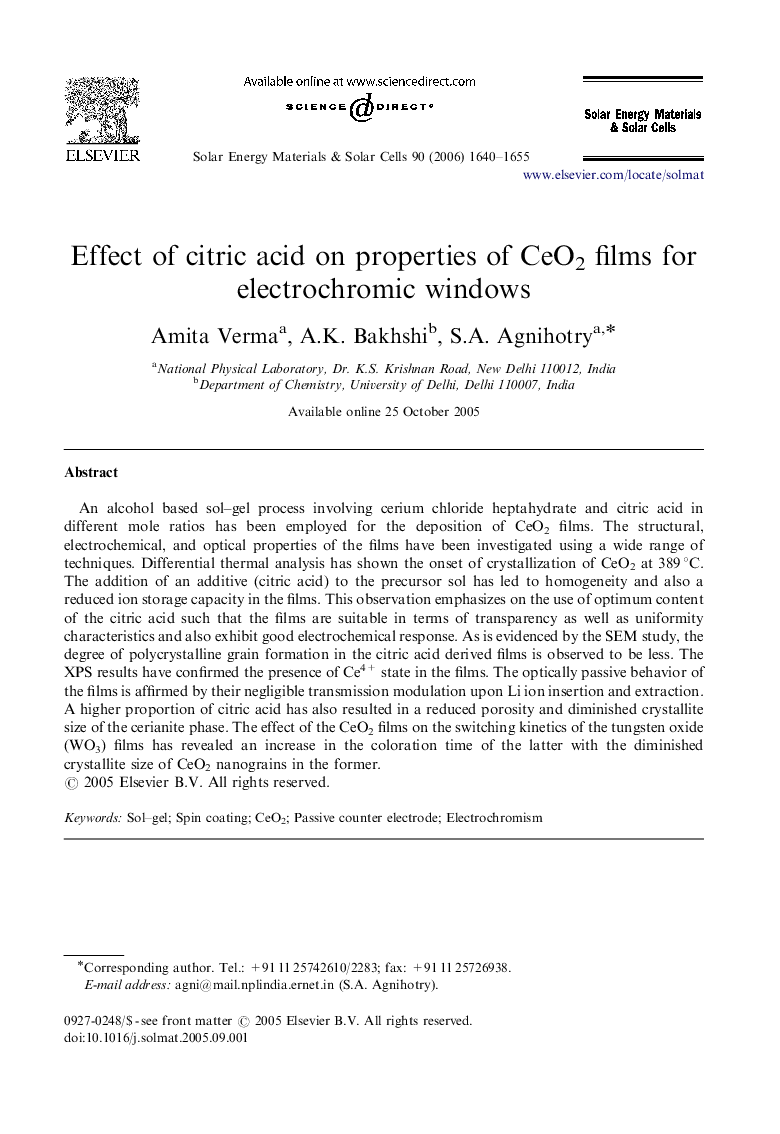| Article ID | Journal | Published Year | Pages | File Type |
|---|---|---|---|---|
| 80997 | Solar Energy Materials and Solar Cells | 2006 | 16 Pages |
An alcohol based sol–gel process involving cerium chloride heptahydrate and citric acid in different mole ratios has been employed for the deposition of CeO2 films. The structural, electrochemical, and optical properties of the films have been investigated using a wide range of techniques. Differential thermal analysis has shown the onset of crystallization of CeO2 at 389 °C. The addition of an additive (citric acid) to the precursor sol has led to homogeneity and also a reduced ion storage capacity in the films. This observation emphasizes on the use of optimum content of the citric acid such that the films are suitable in terms of transparency as well as uniformity characteristics and also exhibit good electrochemical response. As is evidenced by the SEM study, the degree of polycrystalline grain formation in the citric acid derived films is observed to be less. The XPS results have confirmed the presence of Ce4+ state in the films. The optically passive behavior of the films is affirmed by their negligible transmission modulation upon Li ion insertion and extraction. A higher proportion of citric acid has also resulted in a reduced porosity and diminished crystallite size of the cerianite phase. The effect of the CeO2 films on the switching kinetics of the tungsten oxide (WO3) films has revealed an increase in the coloration time of the latter with the diminished crystallite size of CeO2 nanograins in the former.
